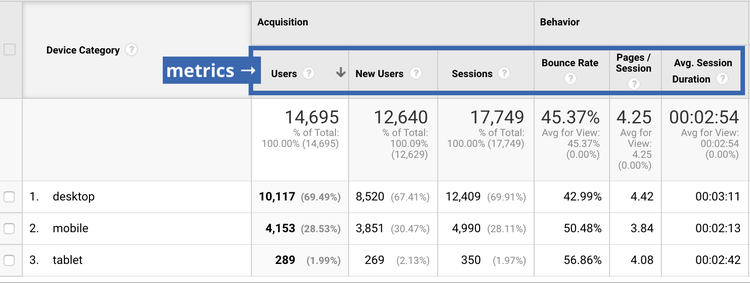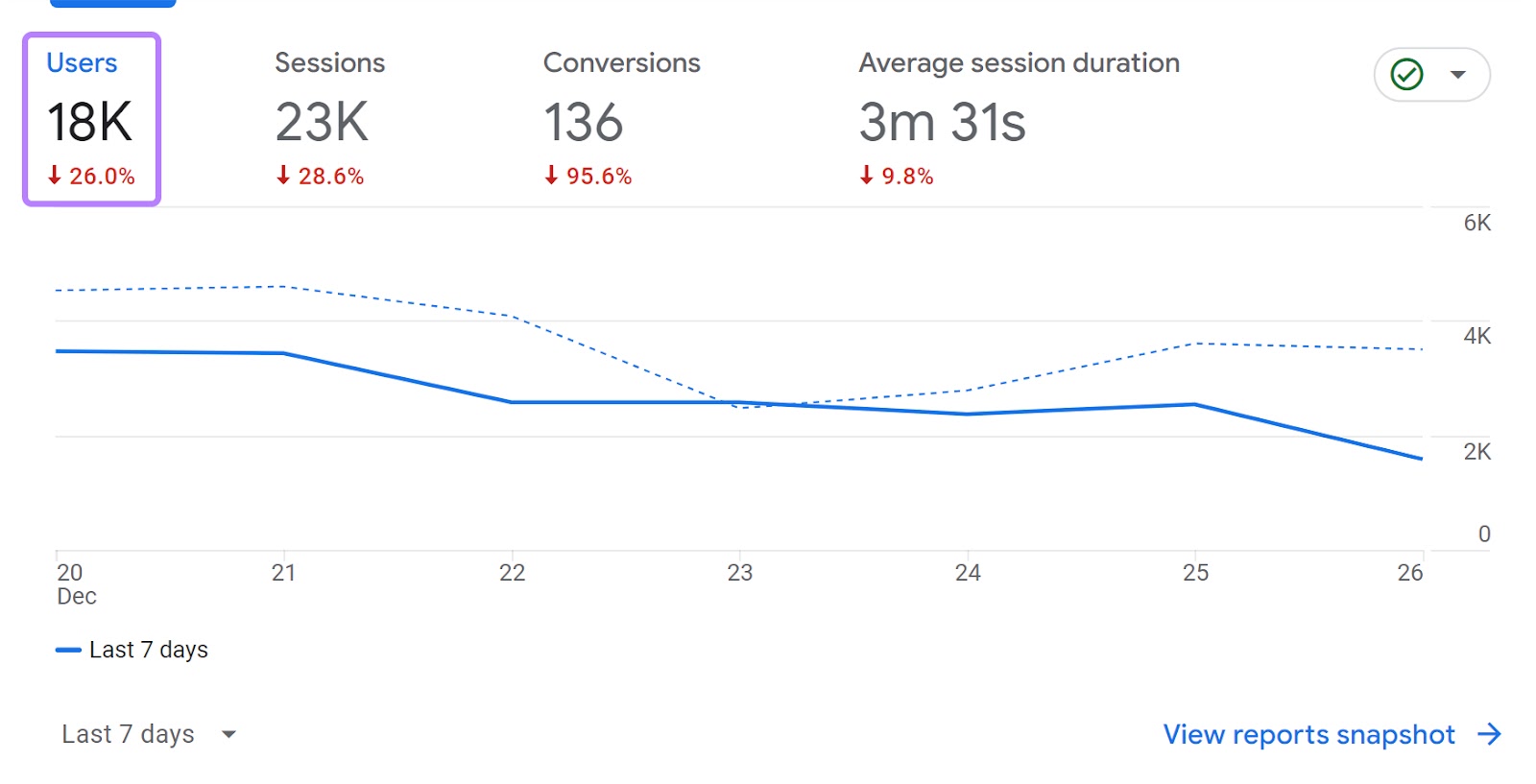Discovering What Is a "Metric" in Google Analytics: Interpretations, Examples, and Practical Uses
Discovering What Is a "Metric" in Google Analytics: Interpretations, Examples, and Practical Uses
Blog Article
Track Success Properly With the Most Crucial Google Analytics Metrics
Understanding the subtleties of Google Analytics metrics can be essential in guiding a service towards success. By diving into the core metrics such as target market demographics, web traffic sources, actions circulation, conversion rates, and bounce price, a wealth of understandings awaits.
Target Market Demographics

Market data can help organizations determine trends, preferences, and actions of their target audience. Knowing the age group that most often checks out a website can affect content production and item offerings. In a similar way, comprehending the geographical areas of visitors can assist in localizing advertising and marketing projects and increasing right into new markets.
Moreover, audience demographics in Google Analytics can disclose valuable understandings concerning the efficiency of existing marketing initiatives. By tracking changes in demographics in time, businesses can adapt their methods to much better engage with their target audience. Generally, leveraging audience group data in Google Analytics is crucial for organizations seeking to boost their on the internet existence and drive success.
Traffic Sources
When analyzing website performance and user interaction, understanding the resources of traffic is essential for companies seeking to maximize their online presence. By delving right into the traffic resources in Google Analytics, companies can gain useful understandings right into where their internet site visitors are originating from. This information classifies traffic into channels such as natural search, direct, referral, social, and paid search.
Organic search website traffic originates from search engine results, reflecting site visitors that discovered the web site with a search inquiry. Straight traffic stands for individuals that typed the web site link straight right into their internet browser. Referral website traffic comes from exterior sites connecting to the site. Social website traffic is produced from social media systems. Paid search traffic arises from on the internet marketing projects.
Analyzing these web traffic sources enables organizations to examine the efficiency of their marketing techniques, recognize locations for renovation, and designate sources sensibly. what is a “metric” in google analytics. By recognizing which networks drive the most traffic and conversions, services can tailor their marketing efforts to take full advantage of outcomes and improve general performance
Habits Flow
Understanding the behavior flow of site visitors is vital for services intending to enhance user experience and conversion rates. Habits Circulation in Google Analytics provides a graph of just how customers navigate via a website, showing the path they draw from one page to another. By evaluating this information, organizations can identify prominent pages, drop-off points, and the most typical courses individuals take. This insight assists in enhancing the web site navigation, material, and design to enhance user interaction and inevitably drive conversions.

Conversion Rates
Determining conversion rates is a critical facet of reviewing the efficiency of a web site in transforming visitors right into customers. what is a “metric” in google analytics. Conversion rates refer to the portion of website visitors that finish a desired activity, such as purchasing, registering for an e-newsletter, or loading out a contact type. By tracking conversion rates with Google Analytics, businesses can obtain beneficial understandings right into the efficiency of their web site and advertising strategies
Evaluating conversion rates permits services to determine which areas of their web site are effective in driving conversions and which may require enhancement. By understanding the factors that influence conversion prices, such as user experience, material high quality, and call-to-action performance, companies can optimize their web site to increase conversions and eventually drive income.
Google Analytics offers numerous tools and reports to track conversion rates, such as objective tracking, e-commerce monitoring, and multi-channel funnels. By utilizing these additional reading features, services can check their conversion rates successfully and make data-driven decisions to boost their online efficiency.
Bounce Rate
To even more evaluate the interaction and efficiency of a site, examining the bounce rate is critical. The bounce price in Google Analytics describes the portion of site visitors who browse away from a site after watching just one web page, instead than continuing to explore various other pages within the same site. A high bounce price could browse around this web-site indicate that site visitors are not finding the web content they anticipated, the internet site is challenging to browse, or the landing page does not line up with the site visitor's intent. Understanding the bounce price can help site owners recognize locations for renovation and maximize their site to motivate site visitors to stay longer and discover even more pages. By assessing the bounce rate together with various other metrics like time on page and conversion rates, businesses can get useful insights right into user actions and make educated choices to improve the total efficiency and customer experience of their internet site. Consistently checking and resolving elements contributing to a high bounce rate can lead to increased engagement, boosted conversions, and ultimately, a more successful online visibility.
Conclusion
In final thought, understanding key metrics in Google Analytics such as target market demographics, website traffic resources, habits circulation, conversion rates, and jump rate is vital for tracking success properly. Examining these metrics makes read this it possible for businesses to tailor advertising techniques, enhance individual experience, and improve content importance. By monitoring demographic shifts, traffic sources, behavior circulation understandings, and bounce prices, organizations can make informed choices to drive general success.
By delving right into the core metrics such as audience demographics, traffic resources, habits circulation, conversion rates, and bounce price, a riches of understandings waits for. Understanding the demographics of web site visitors is crucial for organizations to produce individualized material, optimize user experience, and enhance conversion rates.
By tracking conversion rates via Google Analytics, companies can get useful insights right into the performance of their website and marketing strategies.
By examining the bounce price alongside various other metrics like time on web page and conversion prices, companies can get important insights right into customer actions and make informed choices to enhance the total efficiency and individual experience of their site.In verdict, understanding key metrics in Google Analytics such as audience demographics, web traffic resources, actions circulation, conversion prices, and bounce price is necessary for tracking success properly.
Report this page